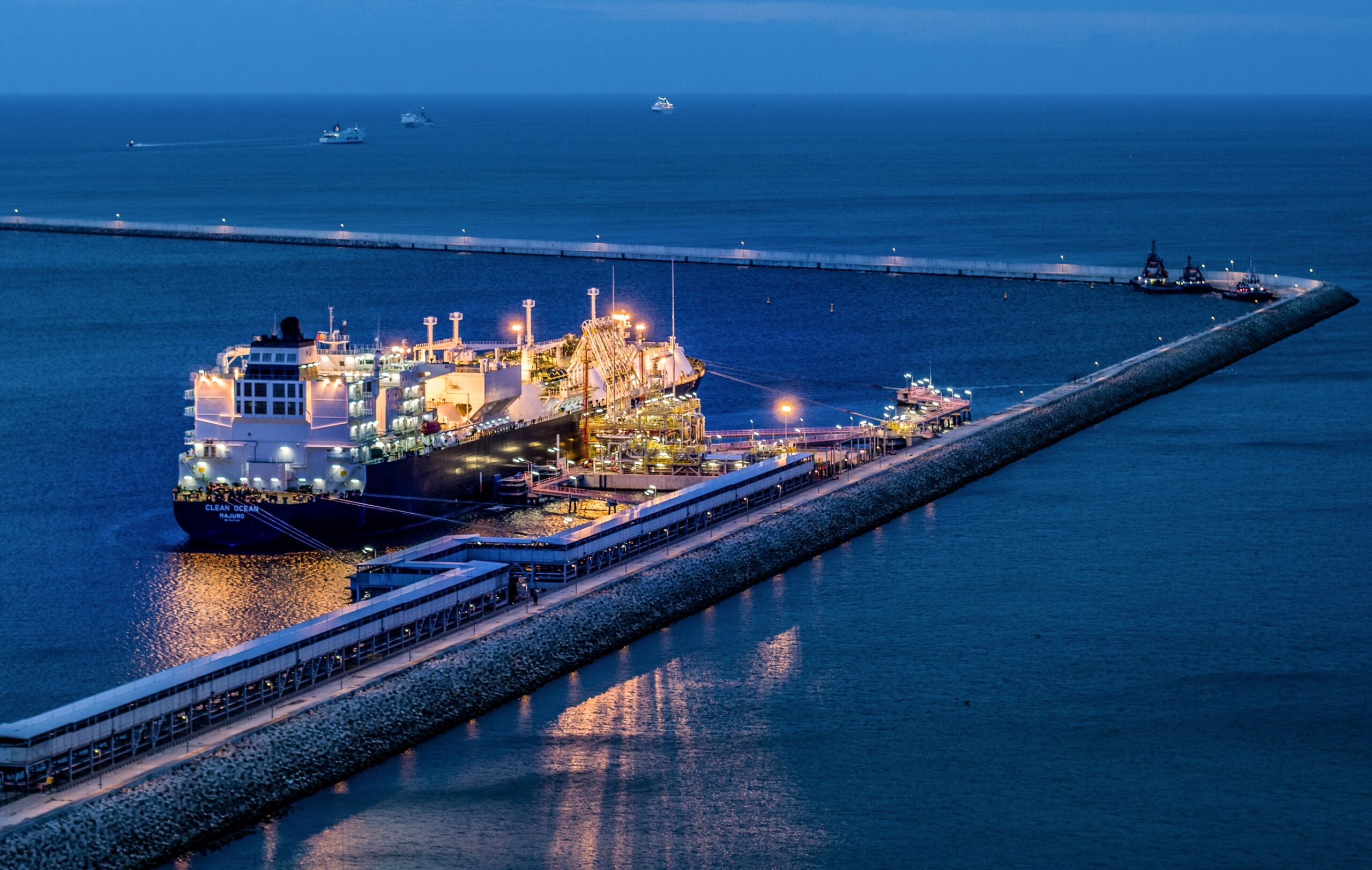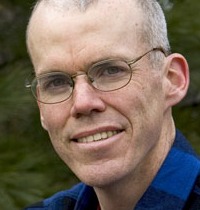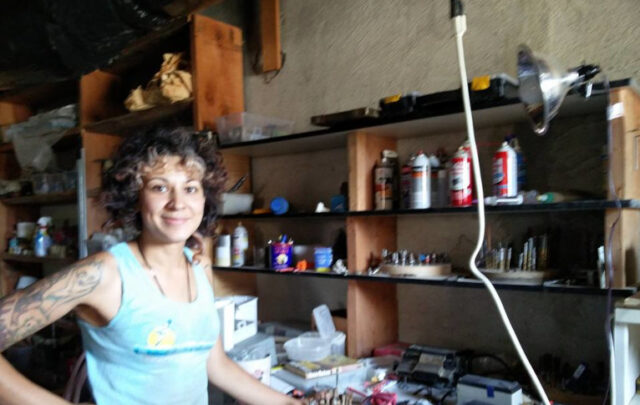The great privilege of being a journalist is that you get to ask questions, and people generally answer them, so you find stuff out. And sometimes that stuff is shocking.
I’ve spent the last few weeks working on a story for the New Yorker about the build-out of Liquefied Natural Gas (LNG) terminals. With some help from a remarkable editor and an unshakable fact-checker, it came out a few days ago, and at the risk of being repetitive I wanted to share some the reporting with you, because it seems to me to point in the direction of what might be the next—and perhaps the ultimate—big battle with the fossil fuel industry. It reminds me a lot of Keystone XL saga, but with perhaps even more at stake.
To put it simply, with the invention of fracking, America—and Canada, and Australia—ended up with huge supplies of fossil gas. It’s not really needed—we could, more cheaply and much more cleanly, power the world with sun, wind, and batteries. But if that happened, the people who own these reserves would have to forego the hundreds of billions of dollars they could get for selling that gas. That is unacceptable to them; they would far rather break the planet.
So they’re in an all-out sprint to get it to market as fast as they can, mostly by exporting it around the world. In the U.S., there are already seven giant LNG export terminals, and there are plans for at least twenty more, mostly along the Gulf of Mexico in Louisiana and Texas, which are close by the giant gas fields of the Permian Basin.
If this buildout continues, and if you counted the emissions from this gas against America’s totals, it would mean that American greenhouse gas emissions would not have budged since 2005. Under the arcane rules of global carbon accounting, exported hydrocarbons don’t count against our total—they’re the problem of the country that eventually burns them (in this case mostly in Asia). But the atmosphere doesn’t care; once burned, the carbon quickly disperses around the globe, heating the entire planet.
Just a single proposed terminal that I talk about in the New Yorker piece—the so-called CP2 LNG plant proposed for Cameron Parish, Louisiana—would over its lifetime be associated with twenty times the greenhouse gas emissions of the huge Willow oil complex that Biden controversially approved earlier this year.
The industry insists that selling gas overseas helps slow climate change, because it could replace coal. But scientists in recent years have shown that leaking methane makes fracked gas at least as bad for the climate as coal—and in any event scientists and diplomats have in recent years embraced the idea of net zero instead of slow incremental transition from one fuel to the next to the next. We’re simply out of time to use natural gas as a “bridge” to a cleaner future; we have to make the jump to renewable energy (which, ironically, is what kept the Texas power grid running during this summer’s heat). The International Energy Agency said in 2021 that we had to stop building new fossil fuel infrastructure right now; the best example of what they were talking about are the giant plants proposed along the Gulf of Mexico.
The good news is that the administration could put the kibosh on these expansion plans. Before they can get a license sell the gas to most of the world, the companies need a certificate from the Department of Energy that such sales would be in the public interest. After a northern hemisphere summer like the one we’ve just experienced, that should be a an easy call. (In the southern hemisphere, meanwhile, Brazil is slated to break its all-time high temperature record—in the waning days of winter.)
The less-good news is that the administration probably doesn’t especially want to do this. The gas industry was very chummy with the Obama-Biden administration (which even set up a special office in the State Department to promote fracking in other countries), and it continues to be a force in this White House. There are important staffers who view supplying natural gas as a way for America to achieve strategic dominance around the world, and the Ukraine crisis offered them a pretext. But the U.S. has enough infrastructure now to meet Europe’s demand—the White House and the EU congratulated themselves this summer on their success in meeting last winter’s energy challenge, and pledged to deliver as much again this year. As our friend Svitlana Romanko keeps pointing out, defending Ukraine is not an excuse for setting up plants with 40-year-lifetimes that will devastate the climate.
And the hard news, of course, is that challenging Biden during an election year that will pit him against a fascist (and climate-denier) is tricky at best. I’ll return to that theme in a few days because it’s important to try and get it right, but suffice it to say we need to do two things. One is beat Donald Trump, and another is stanch the flow of carbon into the atmosphere. Perhaps we can do both.
For today, let me just say: I come away from this reporting convinced that if the LNG build-out continues—here and in Canada and Australia—its sheer size will overwhelm our efforts to rein in global warming. But I’m also convinced it’s the last big gasp of this industry, and that if we can somehow stop it, then the switch to clean and renewable energy will come far more rapidly around the world. A lot is on the line.
In other energy and climate news:
+The next set of climate marches come Nov. 3-4, as part of Global Power-Up, sponsored by the wonderful people at 350.org. It’s designed to coincide with the next round of quarterly profit reports from the big oil companies, and there are already events scheduled around the globe. Join in!
The profits the fossil fuel industry makes by continuing to dig, burn and pollute, must be stopped and redirected by our governments to power hundreds of millions of households worldwide with solar and wind energy. Imagine if instead of going into the pockets of fossil fuel executives that money was used to ensure stable access to clean electricity everywhere, to keep the lights on in hospitals and schools, to insulate homes and much more.
This is the future we need to see – one that lifts people from poverty and protects us all from the worst impacts of the climate crisis.
+David Wallace-Wells writes with typical flair on the quixotic attempt to calculate the actual damages from the climate crisis:
One problem is that the damage accumulates over time, like a compound interest of climate degradation. Most carbon, once emitted, hangs in the air for centuries — and some of it lingers even longer. We often talk about emissions in terms of what economists call “flows”: How much is the United States releasing into the atmosphere this year, how much is China, and how quickly could either reduce that flow to zero? But the problem of warming is caused much more by what they call “stocks” — the total amount of carbon that is up there already, and how much climate damage will be caused by it as that total continues to grow.
Considering climate as a problem of stocks rather than flows also pulls us out of human or political time and toward a deeper and weirder perspective, in which past, present and future blend together, somewhat like gases in the atmosphere. A lump of coal being burned in Shaanxi or Inner Mongolia today does climate damage equivalent to a lump that was burned in 19th-century Newcastle or 20th-century Pittsburgh, and an oil well decommissioned three decades ago may still be doing climate damage three centuries from now. Which all reshapes the question of responsibility, as well: Is China the world’s most destructive nation when it comes to climate, responsible for a quarter of all present-day emissions and twice as much as the next largest emitter? Or is it the United States, responsible for twice as many historical emissions as the next biggest contributor and one-fifth of the global stockpile accumulated over centuries of industrial activity?
+A new report from an insurance industry think-tank concludes, in the words of veteran climate analyst Meteor Blades
that 39 million U.S. properties are overvalued because damage risks from climate change as a result of flooding, hurricanes, and wildfires ““have yet to be reflected in the insurance premiums.” The largest percentage of those properties—60%—are coastal properties at risk from hurricanes, 30% are vulnerable to flooding, and 10% are in wildfire zones.
As the report itself puts it,
Without the ability to insure properties in high risk areas with relatively affordable policies, homeowners will not be able to afford the cost of ownership associated with homes in those areas and property values will deflate, leading to a realization of the current climate-driven overvaluation in the market.
Their guess is it could be a real estate bubble as large as the one that drove the 2008 financial crisis.
+Some good news. President Biden announced this week that he’s using his executive authority to launch the American Climate Corps, long a demand of the Sunrise Movement and others backing a Green New Deal. As the great Varshini Prakash, founding ED of Sunrise, told the Washington Post:
“I can’t speak on behalf of every single youth voter, but if President Biden continues to take bold climate action like this, I think it could go a long way. Young people need to see more policies like this from the administration in the lead-up to the election.”
+An interesting new study in the Proceedings of the National Academy of Sciences documents the potential large carbon savings that come with working from home:
We find that, in the United States, switching from working onsite to working from home can reduce up to 58% of work’s carbon footprint, and the impacts of IT usage are negligible, while office energy use and non-commute travel impacts are important. Our study also suggests that achieving the environmental benefits of remote work requires proper setup of people’s lifestyle, including their vehicle choice, travel behavior, and the configuration of home and work environment.
+Electric vehicles are beginning to cut into demand for oil—and by far the biggest share comes from electric two and three-wheelers, often the taxis of choice in the dense cities of the developing world. According to a new report from Bloomberg they’re displacing about a million barrels of oil daily—and making those cities cleaner and quieter.
+The indefatigable writer and organizer David Helvarg makes the case that climate change must be an alien plot.
The Aliens’ so far successful global climate heating policy also explains why, with solar and wind energy now cheaper than fossil fuels, Texas Governor Greg Abbott has proposed legislation to penalize his state’s booming wind energy sector and promote more oil drilling during a historic heat wave. Also, Florida Governor Ron DeSantis insists on ramping up more oil and gas production as his state’s hurricane prone, hot tub temperature ocean waters register as high as 101 degrees (or what the not-quite-convincingly human DeSantis calls “that brisk and chilly hydrogen oxygen compound”). As for West Virginia Senator Joe Manchin, he’s actually a human they bought off with a yacht.
+The U.S. is on pace to record more billion-dollar disasters this year than any other in history, Christopher Flavelle reports.
The list, compiled by the National Oceanic and Atmospheric Administration, includes the fire in Maui that killed at least 115 people, the deadliest United States wildfire in more than a century; Hurricane Idalia, which struck western Florida as a Category 3 storm; and a storm in Minnesota that dropped hail the size of pingpong balls, cutting off power for more than 25,000 homes and businesses.
And that was just last month.
+The mayors of Boston and London—Sadiq Khan and Michelle Wu—writing in the New Statesman—explain how some of the world’s biggest cities are leveraging fossil fuel divestment to build ever-greener cities:
In 2021 – just two weeks into a new administration – the City of Boston signed an ordinance mandating the divestment of more than $1bn in trusts and invested assets from fossil fuels by 2025 – charting a course towards a greener future. And while Boston is on track to be fully divested from fossil fuels by the end of 2025, this divestment is just the first of many steps in a longer journey towards creating a broader, sustainable investment strategy that doesn’t just slash emissions, but creates jobs, empowers local businesses and stimulates green innovation.
That means continuing to advocate divestment in the city’s pension fund while weaving climate resilience and climate equity into every decision we make. This includes implementing coastal resilience solutions for our most vulnerable neighbourhoods and making green infrastructure standards the default across all our streets, as well as electrifying our school bus fleet and banning fossil fuels in new city buildings, including public housing.
+The leading academic publisher, Elsevier, has many journals documenting cutting edge climate research. They also have a side business providing data services to oil and gas companies. The Union of Concerned Scientists wants them to cut that out.
+the Brushwood Center is honoring tv nature host Baratunde Thurston with its annual environmental leadership prize
Thurston is a multifaceted Emmy-nominated, multi-platform storyteller and producer operating at the intersection of race, technology, democracy, and climate. His PBS television series America Outdoors with Baratunde Thurston, which premiered its second season on Sept. 6, focuses on people’s diversity of experiences and connections to nature. He also is the creator and host of How To Citizen with Baratunde, which Apple named one of its favorite podcasts of 2020, and a founding partner of the new media startup Puck.
+Amy Westervelt (who just won a big journalism prize for her climate coverage) and Geoff Dembicki have an excellent account in the New Republic of a “shadowy global network” intent on “vilifying climate protesters.”
The Atlas Network describes itself as “a nonprofit that aims to secure the right to economic and personal freedom for all individuals” through its global network of think tanks. But before it was a network, it was just one think tank: the U.K.-based Institute of Economic Affairs, or IEA, founded by a man named Antony Fisher.
With access to powerful people came funding from powerful sources. A review of Atlas’s publicly available financials, data from the Conservative Transparency database, and 990 tax forms filed by various foundations reveals that Atlas has received millions of dollars in funding from a number of Koch-funded foundations, the ExxonMobil Foundation, and the Sarah Scaife Foundation, which has a long history of funding climate denial since its founding. As with the Fraser Institute in Canada, the various Koch-backed think tanks in the U.S., and the Centre for Independent Studies in Australia, many of the individual member think tanks that form the Atlas Network are separately funded by foundations affiliated with extractive industries—and, in some cases, directly supported by donations from industry—as well.
+The UN Secretary General is doing a wonderful job of calling out the oil industry—but Mongabay reports he has a little more to do to make the United Nations carbon neutral.
The UN claims to be almost entirely climate neutral, yet that claim is based on buying millions of carbon offset credits that experts say do little to reduce greenhouse gas emissions, The New Humanitarian and Mongabay found in a year-long investigation.
More than 2.7 million UN carbon credits — 40% of those reporters were able to analyse — were issued by hydropower and wind projects, which climate experts say shouldn’t be used to offset emissions as the schemes don’t need income from credits to be viable.
In addition, at least 13 carbon offsetting projects that received UN funds have been linked to reports of environmental damage, displacement, or health problems — all issues the UN routinely works to prevent or mitigate.
+An electric boat just set a new record for the most miles covered in a day (483)
+The Clean Air Act was steadily cleaning American air—until forests started burning like never before.
Over the past two decades, air quality improvements have slowed or been reversed in most of the country, eroding about a quarter of the recent gains, according to a new study in the journal Nature. Some states — Colorado, Montana, New Mexico, Washington and Wyoming — have rolled back 50 percent or more of their progress since 2000. In Oregon and Nevada, wildfire smoke has completely erased their gains.






